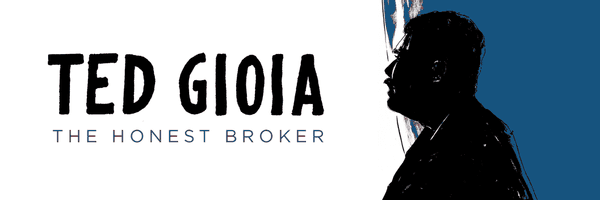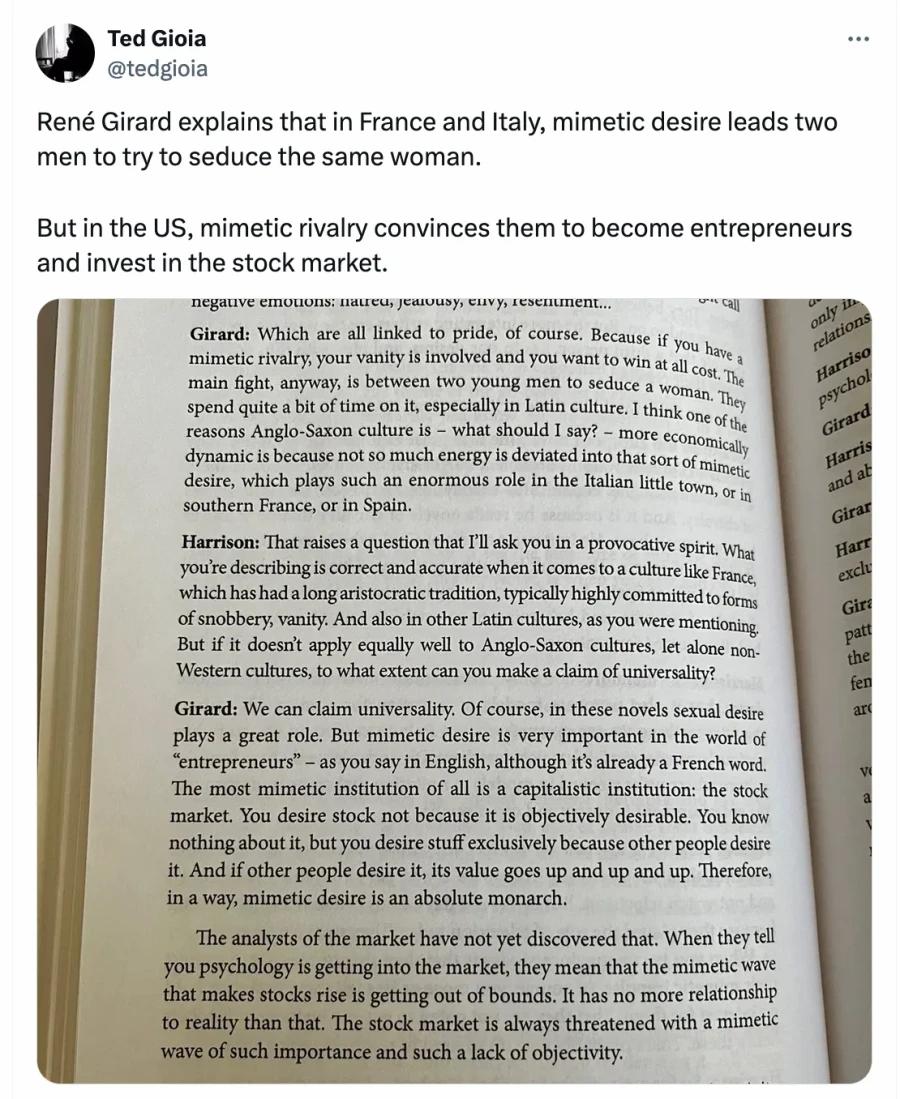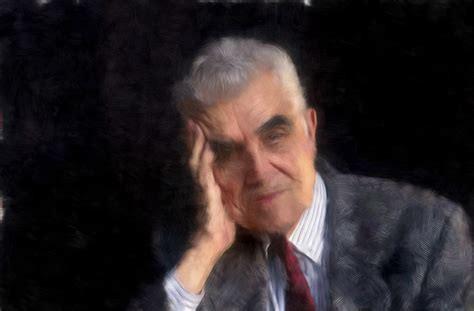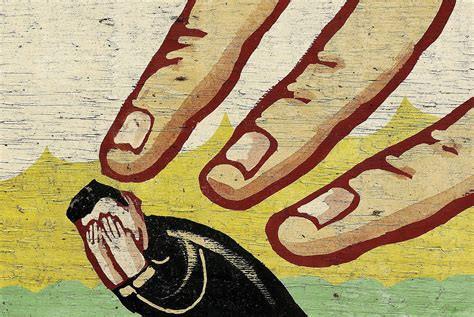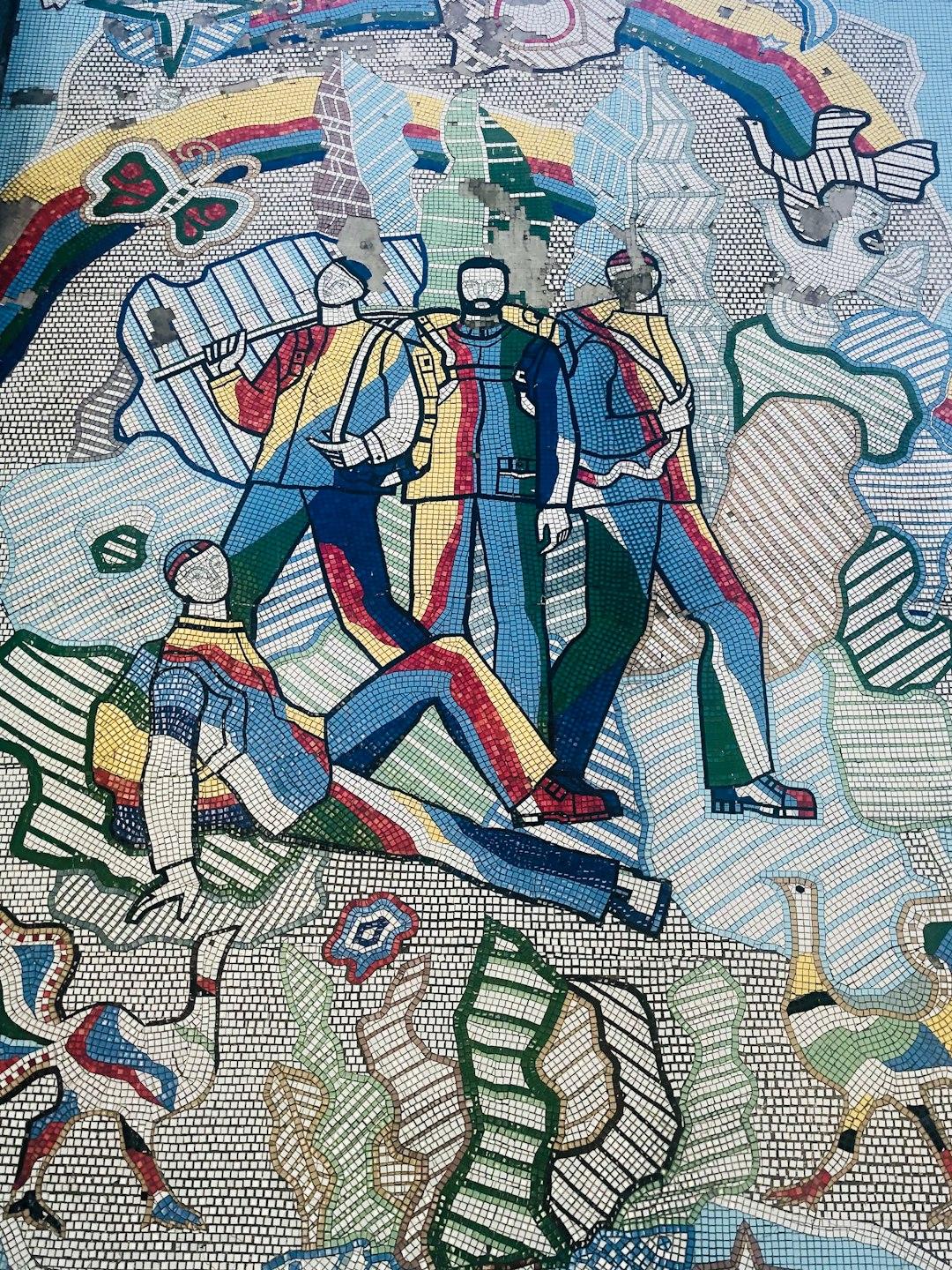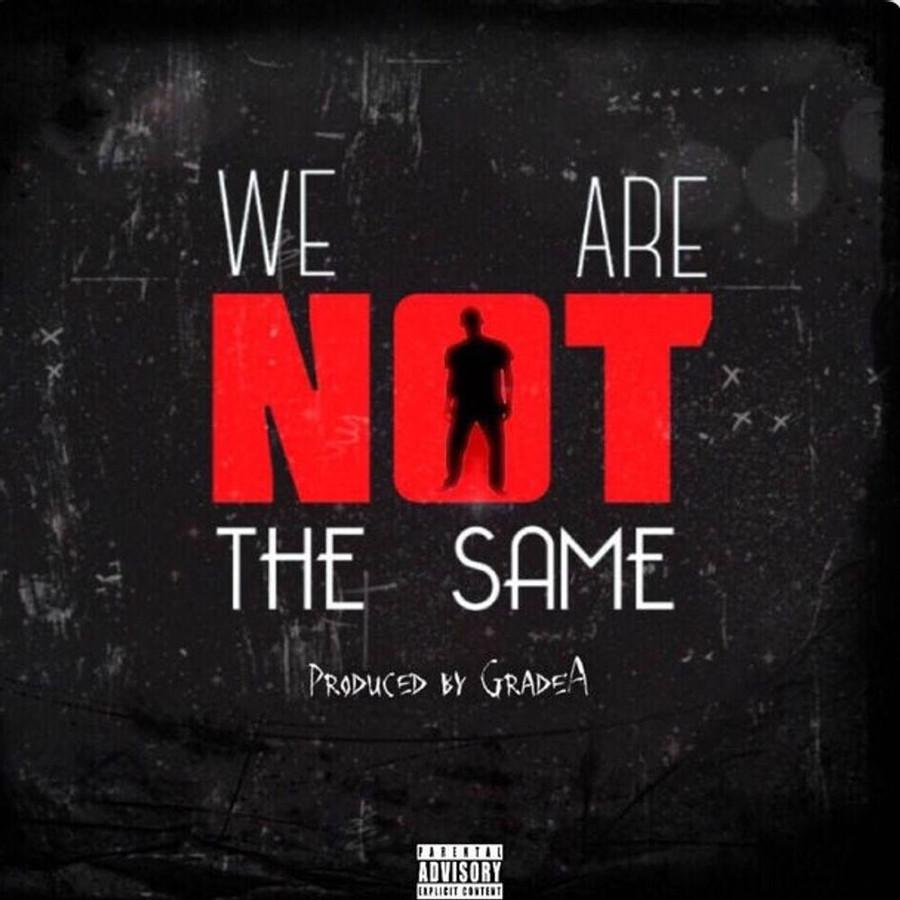12 Things I Learned from René Girard
Curated from: honest-broker.com
Ideas, facts & insights covering these topics:
20 ideas
·3.31K reads
10
1
Explore the World's Best Ideas
Join today and uncover 100+ curated journeys from 50+ topics. Unlock access to our mobile app with extensive features.
René Girard: Exposing Lies & Trends
René Girard (1923-2015), a critic and social theorist — dedicated his life to exposing the hidden truths behind fashions and trends.
Despite his background in literature, Girard's theories have shed light on many societal events happening today. Let's take a closer look:
- Girard's theories explain the underlying motivations behind society's tendencies towards certain fashions and trends.
- He reveals how these trends are often a result of our innate desire to imitate others.
- Through literature, he unveils the lies and illusions that perpetuate these trends.
22
346 reads
"When Girard writes about ancient Greek tragedy, he seems to be describing Instagram and social media. When he analyzes Flaubert or the Book of Genesis, he somehow explicates the current political situation. By looking at what’s old, he clarifies what’s new."
TED GIOIA
21
289 reads
1.
It’s embarrassing to admit, but most of what we do is based on imitating others.
Babies and animals mimic others naturally. However, as we get older, we resist seeing ourselves as imitators. We prefer more complex explanations for our actions.
According to Girard, imitation is intertwined in all aspects of our lives — from our routines, to our relationships, to our most destructive impulses.
Mimetic Desire:
- Can be seen in daily rituals.
- Affects our institutions and shopping habits.
- Is at the root of our violence.
21
240 reads
2.
Imitation is the economic engine of most businesses—just look at the big social media companies or fashion brands—but it’s always disguised.
- Imitation is a powerful force in our world, but it is rarely acknowledged. Its effects are cleverly masked as fashion, trends, and staying up-to-date.
- Advertisements never say "Buy this because others are doing it," yet that is the implicit message. In the corporate world, this is known as benchmarking or viral marketing.
- Manipulating imitation is the easiest way to control people and it is hidden due to its power.
22
195 reads
3.
We need to expose the deadly disguises of imitation, because it causes so much harm.
By coveting what our neighbor desires, we invite conflict and rivalry. This plays out in social, political, and economic conflicts, leading to violence and scapegoating.
Girard argues that the truthteller has a critical role in exposing this imitative passion.
- Mimetic rivalry emerges from desiring what others have.
- This pattern can be seen in conflicts of all scales - from love to war.
- Those who speak the truth have a crucial responsibility to reveal this dangerous force.
21
171 reads
4.
Imitation leads to blood feuds and reciprocal violence—escalating like Mafia wars—which are traditionally resolved by the sacrifice of a scapegoat.
In the past, a live animal was sacrificed as a form of ritual.
Now, people are blacklisted or cancelled on social media to satisfy the need for a scapegoat.
Sacrifice as a Peace Offering: Sacrifices were used to temporarily end conflicts between enemies, shifting the focus to a common target.
21
170 reads
continued..
- Current Examples: Today, people are cancelled or targeted on social media to serve as scapegoats for larger issues.
- Example: After 9/11, political parties focused on (non-existent) weapons of mass destruction in Iraq, instead of each other, creating a temporary ceasefire.
20
152 reads
5.
The scapegoat combines opposites—and is often both victim and hero, profane and sacred, guilty and innocent, dying and resurrecting.
Girard's theory suggests that sacrificial victims, who are treated with admiration and then executed, offer insight into the idolization of modern-day celebrities, influencers.
Key Points:
- Sacrificial victims garner intense emotions, both positive and negative.
- In some cultures, sacrificial victims are transformed into gods.
- Girard believes this relates to the paradoxical worship of celebrities, who face both admiration and criticism.
20
141 reads
6.
The persecution of scapegoats is a central force behind organizations and belief systems—but this can never be mentioned.
- Witch hunters for example, cannot admit that the witches are innocent victims, because that would destroy their own power base and purpose.
- He shows that the scapegoat mechanism is the most powerful secret in the world—because it is both necessary to group formation, yet no hint of it can be acknowledged within the group.
23
125 reads
7.
Humans fail to perceive own scapegoats—so persecution continues while everybody absolves themselves from guilt.
- Girard is blind to his own complicity in scapegoating, a phenomenon that he even admits affects all individuals.
- The instinctive nature of scapegoating suggests that it stems from our competitive tendencies and that we refuse to accept our victim's innocence.
- The tendency to scapegoat originates from our competitive nature and the refusal to acknowledge the innocence of our victims.
22
122 reads
8.
Our most violent impulses are stirred up by similarity, not difference.
Our Desires Are Fueled by Imitation and Can Lead to Conflict:
- When we mimic others, we often find ourselves in bitter conflicts with them. This is because we want what they have and vice versa.
- This is especially true when we live together, with barriers between us slowly eroding away.
- For instance, animosity towards immigrants increases when they move into our neighborhoods, join our country clubs, or even show up at our doorstep.
22
118 reads
continued..
Our Differences Are a Source of Violence, But Sameness is Even More Dangerous
- Girard believes that violence stems from the erosion of differences, rather than the differences themselves.
- In fact, total sameness can be even more dangerous. This is evident in many myths, such as battles between twins, siblings, or the role of the ‘double’ in literature.
- If we were to meet our exact duplicate, it’s likely that we would want to eliminate them.
21
117 reads
9.
Enemies resemble each other, because of mimetic rivalry, but this is another secret that cannot be mentioned.
- In sports and life, rivals often share more in common than they realize. They become "enemies" in pursuit of the same goal, but years later may recognize their similarities.
- This happens everywhere, but the concept of a nemesis proves more valuable than scapegoating.
20
112 reads
examples
- Rivalries in sports (Bird vs. Magic, Ali vs. Frazier) mimic opponents must be enemies, though they share the same goal and lifestyle.
- The same principle applies in other areas of life, where opposing forces are not allowed to see their shared characteristics.
- Blaming enemies for all ills may provide a convenient worldview, yet understanding the nemesis proves a more effective solution.
20
112 reads
10.
Artistic idioms often originate in imitation and ritualized sacrifice.
- Girard doesn't often talk about entertainment, but his ideas have a lot to say about performers and critics.
- For instance, consider dancing as a form of imitation, which intensifies the pleasure for both dancers and viewers.
- These ideas apply to all forms of entertainment, from jazz sessions to fans imitating their idols' hairstyles.
20
107 reads
11.
Our culture rightly celebrates the help and defense of victims, but we need to be vigilant against a ‘super-victimology’ in which this merely leads to targeting and punishing new scapegoats.
All too often, we are forced into the role of either victim or oppressor in situations of violence.
However, it's important to break free from these harmful roles and find a more neutral way of handling conflict.
- Don't play the victim
- Avoid being an oppressor
20
108 reads
12.
We can escape the endless cycles of reciprocal violence—but only by rising above our impulse to vengeance and working instead to delegitimize the drive to punish and scapegoat.
- Girard argues that understanding violence can lead to its rejection. However, violence is often disguised as vengeance, causing harm to society.
- We must reject this propaganda and seek peaceful ways of living together.
20
98 reads
continued..
- Our instinct is to respond to violence with violence, but the higher path is to reject scapegoating and revenge.
- Girard warns that modern scapegoating rituals are now ineffective in bringing catharsis.
- Meanwhile, technology continues to make destructive capabilities more accessible.
- Therefore, our only safe path forward is to choose love and forgiveness in a world where sacrificial rituals no longer hold power.
22
102 reads
IDEAS CURATED BY
Content Curator | Absurdist | Amateur Gamer | Failed musician | Successful pessimist | Pianist |
CURATOR'S NOTE
How a thinker who hated trends & fashions became trendy & fashionable!
“
Similar ideas
11 ideas
16 ideas
How to know what you really want
psyche.co
1 idea
René Girard's Mimetic Theory - Lecture 3&4
Johnathan at Limbo
Read & Learn
20x Faster
without
deepstash
with
deepstash
with
deepstash
Personalized microlearning
—
100+ Learning Journeys
—
Access to 200,000+ ideas
—
Access to the mobile app
—
Unlimited idea saving
—
—
Unlimited history
—
—
Unlimited listening to ideas
—
—
Downloading & offline access
—
—
Supercharge your mind with one idea per day
Enter your email and spend 1 minute every day to learn something new.
I agree to receive email updates
